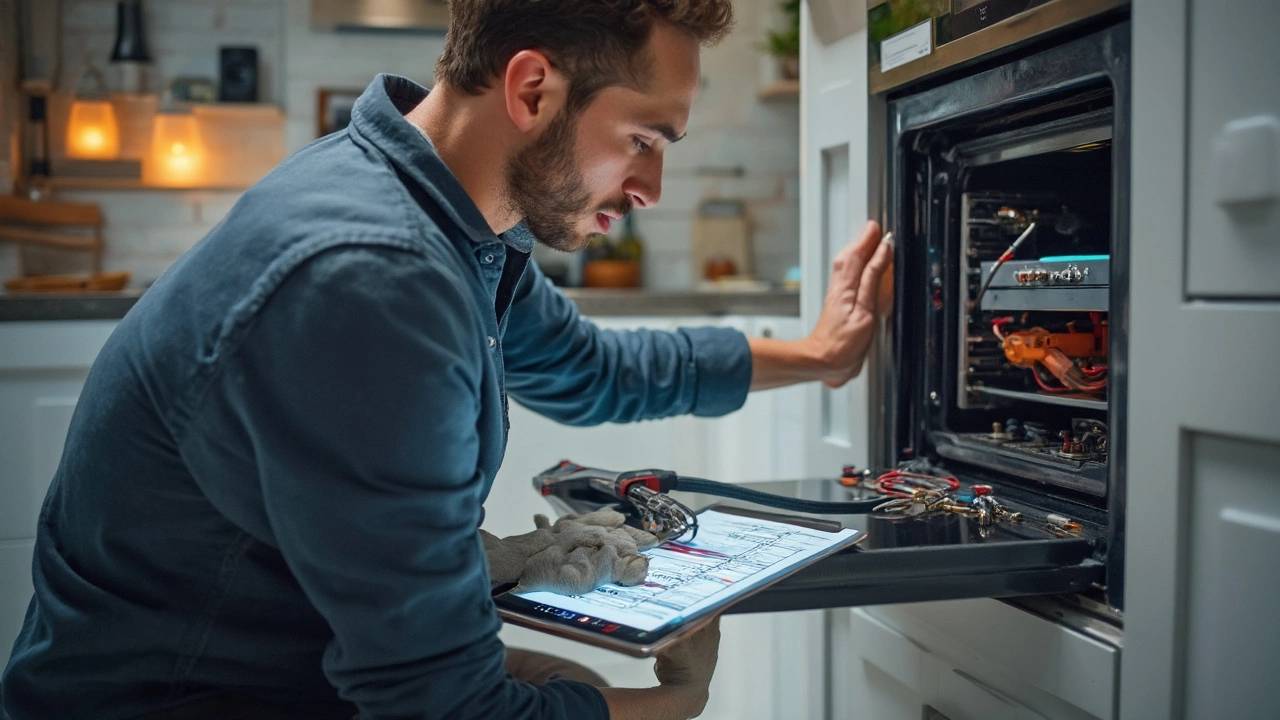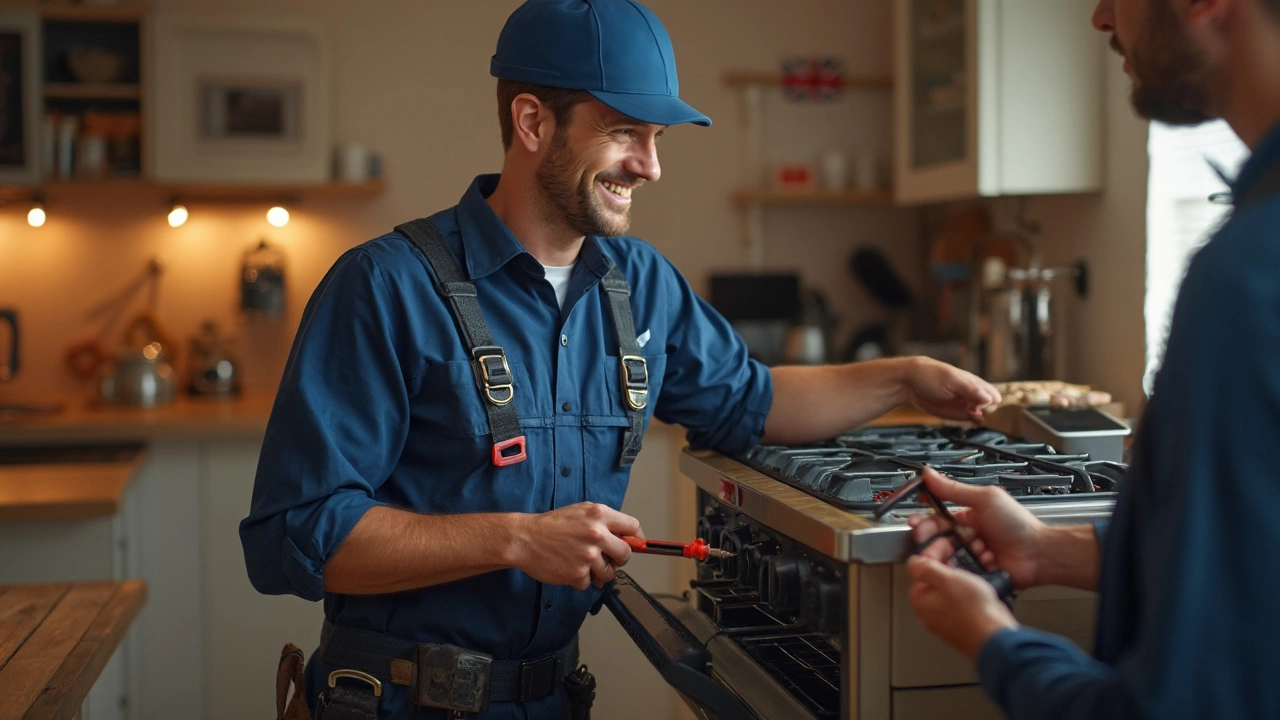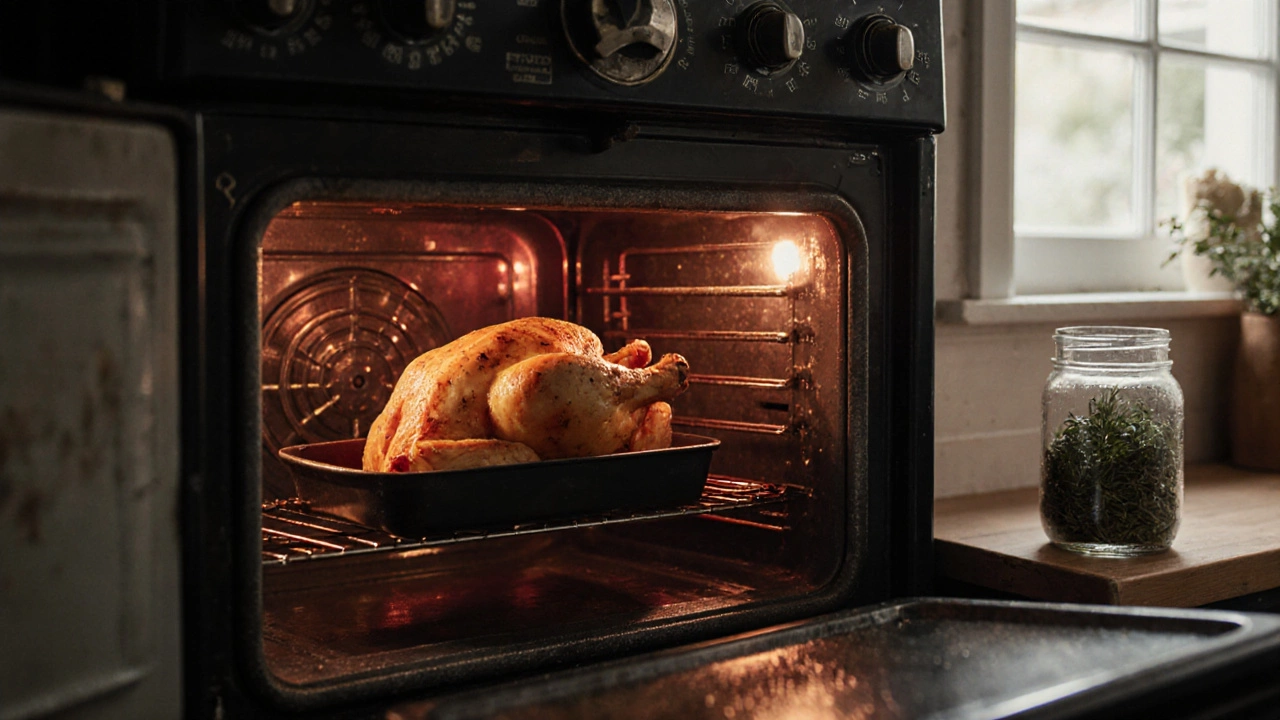
- 15 Mar 2025
- Gideon Thornton
- 0
Thinking about replacing your electric oven? You're not alone! Many folks are stepping up to the challenge of swapping out old appliances, whether it's for an upgrade or because the old one's on the fritz. But where to start?
First, let's talk basics. Understanding your current setup is key before diving in. Check the oven's manual if you have it—knowing the specs will guide you through the process smoothly. You'll want to figure out the dimensions and the power requirements; otherwise, you might end up with a shiny new oven that doesn't fit or can't be powered!
- Understanding Your Oven
- Tools You'll Need
- Safety First
- The Replacement Process
- Common Mistakes to Avoid
- When to Call a Professional
Understanding Your Oven
Before you even think of replacing your electric oven, it's crucial to know a bit about what you've got. This isn't just about making sure the new one fits; it's about making sure you don't end up rewiring your kitchen!
Size and Fit
Grab that measuring tape. The first step is to measure your current oven, both inside and out. Knowing the standard dimensions can help prevent any installation woes. Most built-in ovens have standard widths of 24, 27, or 30 inches, but there's always a chance your setup is custom. You want to get this right to avoid any ‘surprises’ when the new oven arrives.
Power Connections
The power supply is absolutely key. Most electric ovens operate on a 240-volt dedicated circuit. Check your oven’s power requirements with the manual or its label, usually found inside the door or on the back panel. If you’ve got a 120-volt setup at home, you might have to think about some electrical upgrades.
Features to Match or Upgrade
A little rewind on features will do you good. Do you love that self-cleaning option or the convection setting? Make note of what you absolutely need in your next oven.
Age of the Oven
If your oven's seen better days, it might be using more energy than one thinks. The U.S. Department of Energy says that ovens over 15 years old are less energy-efficient. A new oven might offer you savings on your energy bill you didn't expect.
| Feature | Old Oven | New Oven |
|---|---|---|
| Energy Efficiency | Low | High |
| Dimension Flexibility | Fixed | Varies |
| Self-Cleaning | Rare | Common |
Taking these steps to understand your electric oven will not only make replacement easier, but it will also ensure you pick the right oven that aligns with your cooking style and household needs.
Tools You'll Need
Replacing an electric oven might sound like a job for the pros, but with the right tools, you're more than halfway there. Before you start, make sure you've got everything you need. Here's your go-to list:
- Philips and flathead screwdrivers: These are essential for loosening and tightening those pesky screws.
- Adjustable wrench: Handy for tackling the nuts and bolts that hold the oven in place.
- Voltage tester: Safety first, right? Ensure there's no electrical flow before you start poking around.
- Measuring tape: Double-check the dimensions to avoid any fitting issues—trust me, you'll want to skip the headache of the wrong size oven.
- Work gloves: Protect those hands from sharp edges and avoid getting any dirt or grease on you.
- Helper: Okay, not a tool per se, but moving an oven isn't a one-person job. A friend or family member can make all the difference.
One pro tip from appliance expert, Mike Harris:
"Always double-check your power supply! Many power mishaps occur because folks overlook compatibility with their circuit ratings."Taking his advice to heart could save you from some serious headaches! Now, if you're itching to get all organized, you might even consider laying everything out in advance—just don't forget where you put them.
Safety First
Before you even think about taking the plunge into replacing your electric oven, let's chat about safety. Safety isn't just a buzzword here; it's your best friend. Handling electrical appliances comes with its own set of rules.
Power Off
First things first, always disconnect the power before you start fiddling with anything. We all love a good sparkler, but not when it's coming from our electric oven. Flip the circuit breaker or unplug from the wall. Double-check this because everyone deserves peace of mind during a DIY project.
Tools and Conditions
Make sure your tools are in good condition. Worn-out tools might seem harmless, but they can slip and cause injuries. A decent screwdriver, some pliers, and a voltage tester should do the trick for most jobs. And remember, don't go standing on wobbly chairs or balancing on counters—falling from heights is nobody's idea of fun.
Check for Gas
If you're replacing a unit that was connected to gas lines too, it's crucial to check for any gas presence. Even if you're just going electric, making sure those gas lines are safely capped off is a wise move. A gas leak is a whole other trouble you don't want to deal with.
Protect Yourself
Wear protective gear like gloves and goggles. You never really know when some sharp piece of metal or a speck of dust could decide to pick a fight with you. Just basic stuff—it's all about staying safe while getting the job done.
Professional Help
And hey, if you feel like things are slipping out of hand, there's no shame in calling a pro. Electricians exist for a reason, and they can make sure everything’s up to snuff, especially with those complicated wiring jobs. You're not just paying for their time but their expertise.
Keeping these tips in mind will set you up for a smooth and safe replacement. Your future self will thank you!

The Replacement Process
Now that you've got a grip on your existing electric oven setup, it's time to jump into the actual swap. The process might seem like climbing a mountain at first, but we've broken it down into manageable steps.
1. Disconnecting Power
Safety is the name of the game here. Make sure you disconnect the power supply before doing anything else. Find your house's main electrical panel and cut off the power to your kitchen or oven specifically. Double-check that there's no power flow to avoid any nasty surprises.
2. Removing the Old Oven
Next, you'll need to remove the old unit from its current position. Ovens can be hefty, so if yours is built-in, consider asking a buddy for a hand. If it's a freestanding model, gently slide it out. A dolly or some sliders can prevent scratches on your floor.
3. Preparing the Space
Once you've cleared out the old oven, make sure the space is clean and ready for the new addition. Take a moment to measure the space again. Use the electric oven replacement specs you gathered to ensure everything will fit without a hassle.
4. Connecting the New Oven
Time to slide in the shining new appliance! Align it properly, and carefully connect the power cables according to the manual. Manufacturers usually provide clear wiring instructions, so take your time to follow them.
5. Testing Everything
Before wrapping up, make sure to run a few tests. Turn the power back on and test if the oven heats properly. Check various settings and features to confirm everything works like a charm. This is the moment of truth!
| Step | Estimated Time |
|---|---|
| Disconnect Power | 5 minutes |
| Remove Old Oven | 20 minutes |
| Prepare the Space | 15 minutes |
| Connect New Oven | 30 minutes |
| Test New Oven | 10 minutes |
At any point, if you're unsure or run into trouble, it's always a smart move to consider professional help, especially with electrical components. The goal is to have a safely installed oven ready to bake those brownies, stress-free!
Common Mistakes to Avoid
When it comes to replacing an electric oven, a few pitfalls could trip you up. Let's dive into some common mistakes people make and how you can steer clear of them.
Skipping Safety Checks
One big no-no is forgetting to disconnect power before you start. This isn’t just about flipping a switch; you need to shut off power from the breaker to avoid electrical shocks. Trust me, you don’t want to skip this step.
Ignoring Measurements
People often eyeball it and find themselves with an oven that doesn’t fit the existing space. Measure the width, height, and depth of your current unit and the space it sits in. Bigger isn’t always better if it doesn’t fit!
Incorrect Wiring
If you decide to DIY the wiring without solid electrical knowledge, things can go wrong quickly. Wire connections need to be precise. Mismatched connections could trip your circuit breaker or damage the appliance.
Neglecting to Level the Oven
An uneven oven can cause more than just aesthetic issues. Cooking times can be affected, and food might not cook evenly. Use a level to ensure everything is balanced perfectly.
Not Knowing When to Call in the Pros
Sometimes, calling a professional is the best route to avoid costly errors. If you’re unsure or things get complicated, a quick consultation with an expert can lift a huge weight off your shoulders.
Here's a quick snapshot for a better understanding:
| Task | Common Mistake | Avoiding the Mistake |
|---|---|---|
| Power Safety | Failure to turn off the breaker | Always disconnect power completely |
| Space Measurement | Not measuring accurately | Measure twice, cut once |
| Wiring | Mismatched wires | Double-check connections |
| Leveling | Ignoring leveling | Use a level for adjustments |
Keeping these points in mind when replacing your electric oven can save you from a lot of future headaches. Always better to be safe than sorry, especially when it comes to electrical appliances!
When to Call a Professional
So, you're knee-deep in the electric oven replacement process and hitting a wall. No shame in that—sometimes calling in the pros is not just smart, but necessary. Let’s break down when it's best to swallow our pride and dial up a specialist.
Puzzling Connections
If you find yourself staring at a tangle of wires and you ain't a certified electrician, it might be time to call someone who is. Messing with electrical circuits without the proper know-how isn't just risky; it can be downright dangerous.
Unusual Sounds or Smells
Once your new oven powers up, and you notice strange sounds or burning smells, halt right there! These are classic red flags that something's not hooked up right. A professional can quickly zero in on issues you might not catch.
Complex Installations
If your home appliances setup involves intricate cabinetry or custom fitting, a professional might handle the job faster and better. They'll ensure your precious countertops stay pristine, and your oven is snug but accessible.
Manufacturer Specifications
Ever read the fine print in an oven's warranty? Many manufacturers specify professional installation to keep that warranty valid. Check your warranty’s small print to avoid any unfortunate surprises.
Cost-effectiveness
Believe it or not, an expert might save you cash in the long run by avoiding potential missteps that lead to costly repairs or replacements. Snagging a deal on an installation can balance out your budget, especially if you time it during a slow period for trade professionals.
| Reason | Best Course of Action |
|---|---|
| Complex wiring | Hire an electrician |
| Smells or noises | Call appliance repair |
| Custom cabinets | Professional installer |
Remember, sometimes the smartest move is knowing when to throw in the towel and bring in the big guns. Proper installation equals peace of mind, and that's worth a whole lot when it comes to something used as often as your oven.




